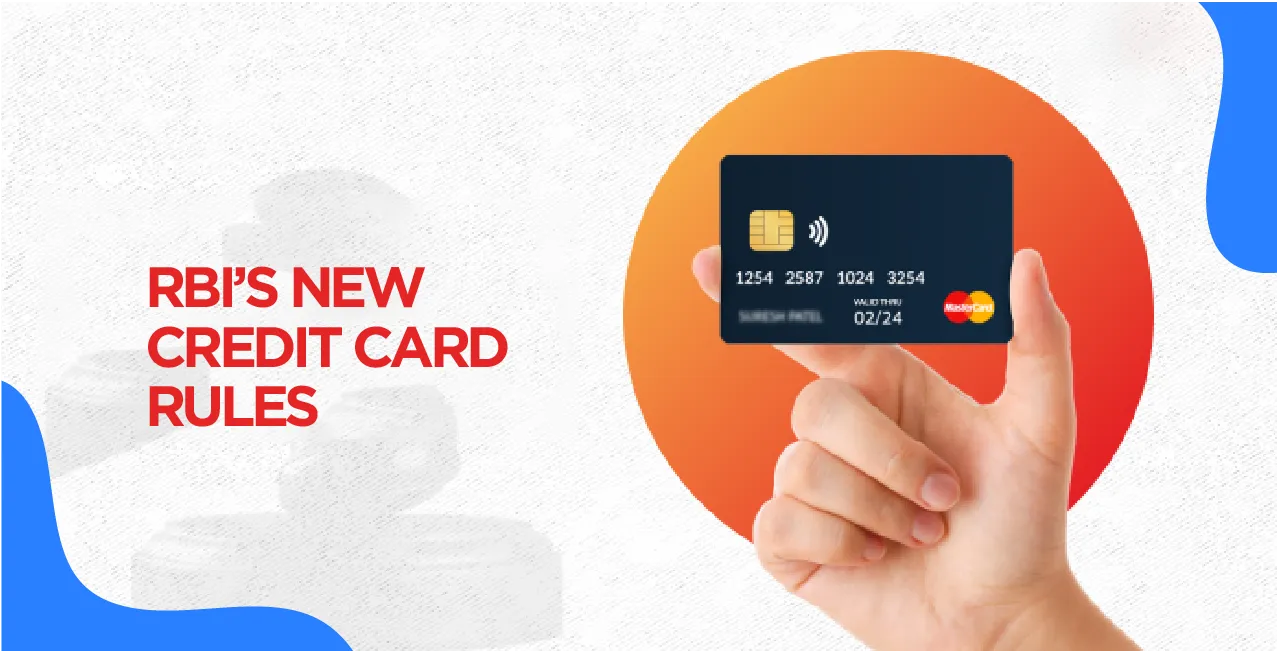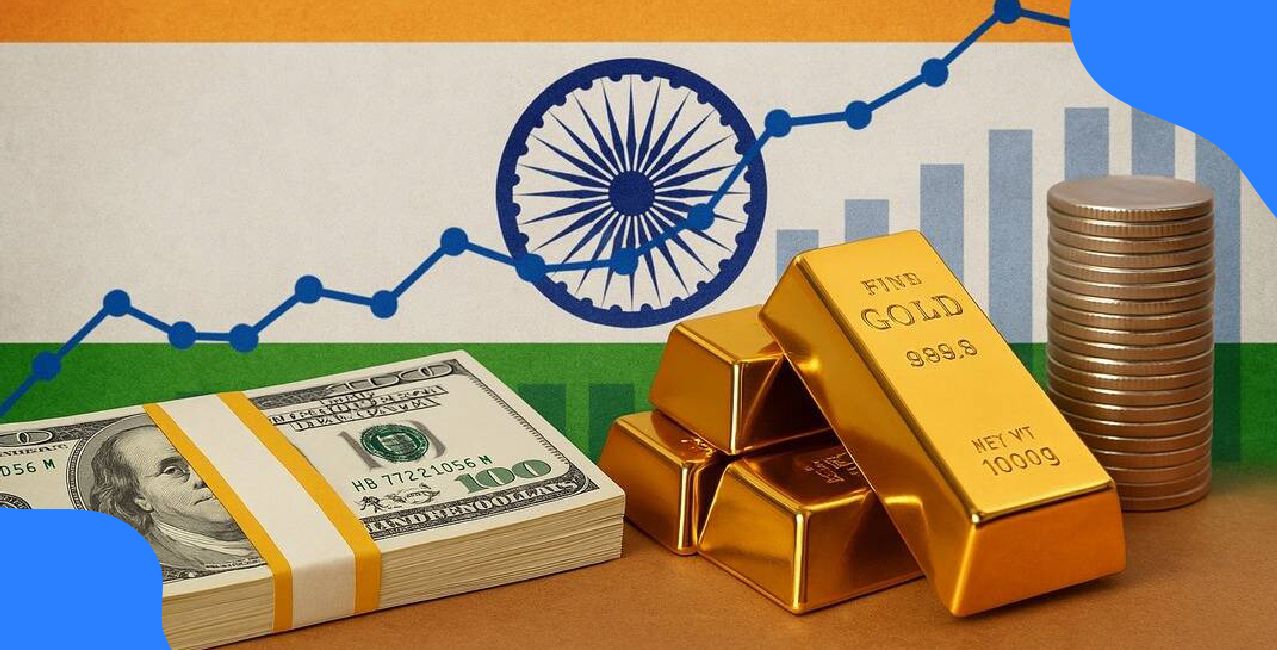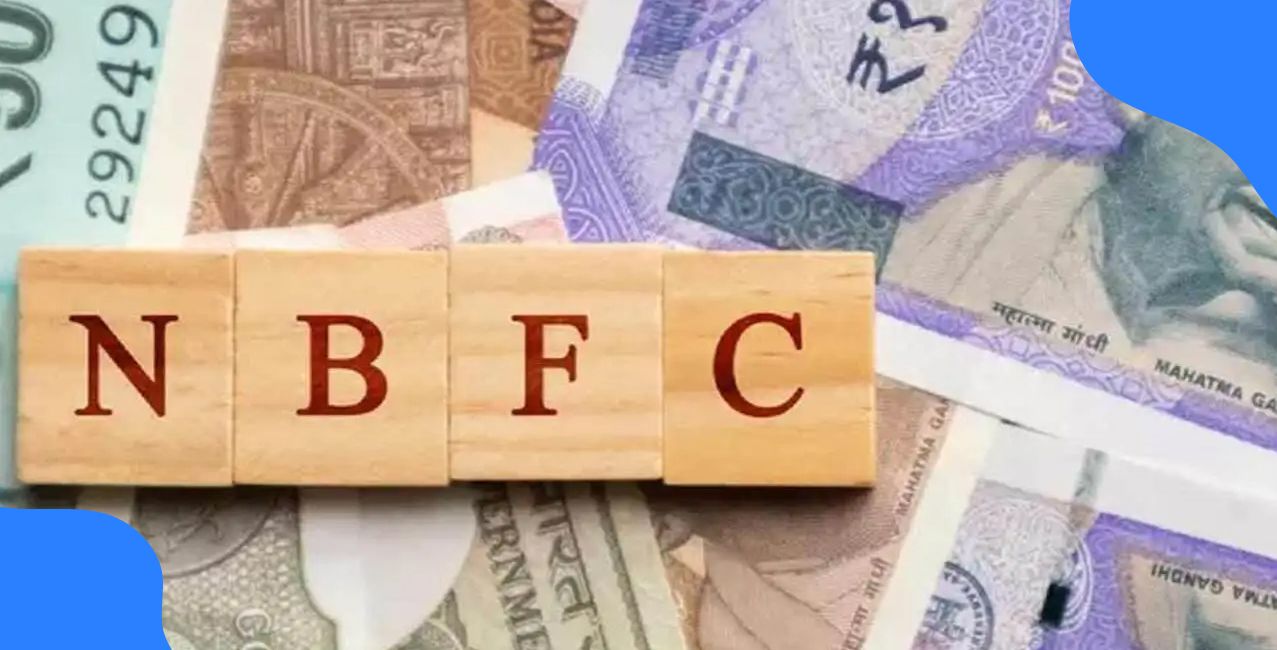
Author
LoansJagat Team
Read Time
9 Minute
20 Feb 2025
RBI’s New Credit Card Rules: How It Affects Your EMI & Loan Eligibility
Rohit, a 25-year-old boy, works in an IT company in Mumbai. He decided to buy his dream house. His credit score was 750, and the bank was ready to give him an 8% interest rate loan.
One day, Rohit discovered that his credit score had dropped to 720, and now the interest rate was 8.5%. Rohit did not understand why this happened to him. And this is the effect of RBI’s new credit card rules.
RBI (Reserve Bank of India) has introduced new rules directly affecting credit cards, EMI, and loans. These rules are beneficial for consumers. In this blog, we will discuss the new rules of RBI.
Rule 1: Credit Card Should Be Updated Every 15 Days
RBI has announced a significant update, which requires banks and financial institutions to update their customers’ data every 15 days. This new rule will be applicable from January 1, 2025.
Banks must send this data to credit bureaus or credit information companies (like CIBIL, Experian, Equifax, or CRIF Highmark) so that the bureaus can update the consumer’s data more frequently.
The credit cards will be updated twice a month—15th and the last day of every month. If you have taken an instant loan, or are using a credit card, you need to be more careful of your payments and credit utilisation. Because after every 15 days, your credit score will be updated, and any late fees or high credit utilisation can affect your credit score.
Example:
Rohit got a new credit card and had a bill of ₹50,000. He didn’t pay the bill on time, which increased his credit utilisation ratio from 40% to 60%. Earlier, Rohit would have found out about his score drop the next month.
Read More - How to Close an ICICI Credit Card
But now it got updated within 15 days and dropped to 720. Rohit needs to be more careful about his payments and credit utilisation because his score will be updated every 15 days.
Credit Score Update Frequency
Period | Update Frequency | Impact On Consumers |
Before 2025 | Monthly | Less Transparency |
2024 Onwards | Every 15 days | More transparency and accuracy |
Rule 2: Credit Check Notifications To Consumers
RBI first introduced this rule in October 2023, which remains relevant in 2025. It is now mandatory for all lenders, including banks and NBFCs, to send credit check notifications to consumers whenever they access their credit reports.
This means that if any lender checks your credit report (such as for instant loan eligibility), they must inform you. RBI implemented this rule to ensure that every consumer knows when and by whom their credit report is accessed.
You will receive an SMS or email notification whenever a lender performs a "hard inquiry" on your credit report (i.e., checks your credit history). This helps you stay informed about credit report access and manage your credit score more effectively.
Example:
Rohit applied for a new car loan. When he submitted his application, he received an SMS: "XYZ Bank has accessed your credit report for a car loan application." This notification made Rohit aware that his credit score had been checked, allowing him to take the necessary steps to improve his score.
Scenario | Before 2023 | After 2023 |
Credit Check Alerts | No | Yes |
Consumer Awareness | Low | High |
Transparency | Limited | High |
Rule 3: Transparent Reasons For Credit Card Denial
RBI introduced this rule to ensure that consumers know why their loan application was rejected. This rule applies to all lenders, whether a major bank, an NBFC, or an instant small loan app. If an applicant's credit application is rejected, the lender must provide clear reasons.
If there are multiple reasons for rejection, the lender must list all of them clearly for the applicant. This transparency helps consumers understand why their application was rejected and allows them to improve their credit profile to avoid future rejections.
Example:
Rohit applied for a personal loan, but his application was rejected. Earlier, he would only receive a generic "Application Rejected" message. However, the bank has clearly stated that his credit utilisation ratio is high (60%), his credit history is short (2 years), and he has made too many recent credit enquiries (4 enquiries in the last 6 months).
This helped Rohit understand that he needs to lower his credit utilisation, build a more extended credit history, and avoid excessive credit enquiries.
Rejection Reasons Transparency
Scenario | Before RBI Rule | After RBI Rule |
Rejection Reasons | Not Clear | Clear and Detailed |
Consumer Improvement | Difficult | Easy |
Future Application Success | Low | High |
Why This Rule Matters:
- Transparency: Consumers will know exactly why their application was rejected.
- Improvement: They can work on their credit profile to avoid future rejections.
- Empowerment: It gives consumers confidence in making informed financial decisions.
Example:
- Credit Utilisation Ratio: Rohit’s credit utilisation was 60%, above the ideal limit of 30% or less.
- Credit History: His credit history was only 2 years, whereas lenders prefer at least 3-4 years.
- Recent Credit Enquiries: Rohit had 4 credit enquiries in the last 6 months, which made him appear risky to lenders.
Common Reasons for Credit Application Rejection
Reason For Rejection | Impact On Application | How To Improve |
High Credit Utilisation Ratio (>30%) | Negative | Pay off debts, reduce credit card usage |
Short Credit History (<3 years) | Negative | Build credit history over time |
Too Many Recent Credit Inquiries | Negative | Avoid unnecessary credit applications |
Low Credit Score (<700) | Negative | Improve credit score by timely payments |
Rule 4: Advance Default Notifications
RBI has introduced this rule to ensure that consumers receive alerts before missing their payments. According to this rule, if a consumer is about to miss a payment (such as an EMI or credit card bill), the lender must send multiple reminders and notifications before reporting the default to Credit Information Companies (CICs) like CIBIL, Experian, Equifax, or CRIF Highmark.
Lenders must provide all relevant information to borrowers via SMS or email. Banks and financial institutions must appoint nodal officers to address customer grievances effectively.
Example:
Rohit has a credit card bill of ₹25,000, due on March 15. He forgets to make the payment, but on March 10, he receives an SMS:
"Your credit card bill of ₹25,000 is due on March 15. Please pay on time to avoid late fees."
Again, on March 12, he gets another reminder:
"Reminder: Your payment of ₹25,000 is due in 3 days."
If Rohit still doesn’t pay, he will receive a final notification on March 16.
Advance Default Notification Process
Step | Notification Type | Timing | Purpose |
1 | First Reminder | 5 days before due date | Warn about upcoming payment |
2 | Second Reminder | 3 days before due date | Remind about the due date |
3 | Final Notification | 1 day after due date | Alert about overdue payment |
Rule 5: Faster Complaint Resolution Timeline
RBI introduced this rule to resolve consumer complaints as quickly as possible. Under this rule, all credit-related entities, including lenders (banks and NBFCs) and credit information companies (CICs), must resolve complaints within 30 days. This timeline is divided into two parts:
- 21 days for the lender (bank or NBFC): The lender must resolve the complaint within 21 days of receiving it.
- 9 days for the credit bureau: Once the lender has resolved the issue, the credit bureau gets an additional 9 days to update its records.
If the complaint is not resolved within 30 days, the responsible credit company must pay a penalty of ₹100 per day until the issue is fixed. If the lender completes the correction on time but the credit bureau delays the update, then the bureau must compensate the customer.
Example:
Rohit noticed an error in his credit report, where a fully paid loan was still marked as "unpaid." He filed a complaint on March 1st.
- Step 1: The lender (bank) resolved the issue within 21 days, by March 21st.
- Step 2: The credit bureau (CIBIL) took another 9 days to update its records, completing the process by March 30th.
- Final Outcome: No penalty was charged since the complaint was resolved within 30 days.
However, if the lender had failed to resolve the issue within 21 days, they would have had to pay ₹100 per day as a penalty. Similarly, if the credit bureau had delayed beyond the 30-day limit, it would have had to compensate Rohit for the inconvenience.
Complaint Resolution Timeline
Step | Responsible Party | Timeline | Penalty for Delay |
1 | Lender (Bank/NBFC) | 21 days | ₹100 per day |
2 | Credit Bureau | 9 days | Compensation to Customer |
Impact of RBI’s New Rules on Instant Loan Eligibility
RBI’s new rules and updates do not directly affect instant loan eligibility. However, they support better management of credit scores and financial discipline. Since credit scores will now be updated every 15 days, borrowers must be more careful of their payments and credit utilisation to maintain loan eligibility.
Key Factors to Consider for Instant Loan Eligibility
1. Frequent Credit Score Updates
Credit scores will now be updated twice a month (on the 15th and the last day of the month). Any late payments or high credit utilisation will impact your score much faster than before.
Also Read - How to Apply For a Credit Card
2. Credit Utilisation Ratio (CUR)
Your credit utilisation ratio (CUR) directly impacts your credit score and loan eligibility. You should keep your CUR below 30%.
Example:
- Total Credit Limit: ₹1,00,000
- Credit Used: ₹30,000
- Credit Utilisation Ratio: 30% (Ideal)
If your CUR exceeds 30%, your credit score may drop, making you less eligible for instant loans.
3. Timely Payments
Late payments negatively impact your credit score. However, under RBI’s new rules, borrowers will receive advance notifications to help them make payments on time.
4. Credit Check Notifications
You will receive a notification whenever a lender checks your credit report. This helps you stay informed about who is accessing your credit report and allows you to manage your credit score more effectively.
Conclusion
RBI’s new credit card rules are a game-changer for consumers. These rules promote transparency, awareness, and financial discipline. Like Rohit, you can also use these regulations to improve your credit score, manage your EMIs, and enhance your loan eligibility.
FAQs Related to RBI’s New Credit Card Rules
1. What happens when the credit score updates every 15 days?
A. The credit score will be updated twice a month (on the 15th and month-end). Any late payments or high credit utilisation will reflect sooner, which can impact loan eligibility.
2. What are the benefits of credit check notifications?
A. you will receive an SMS or email notification whenever a lender checks your credit report. This helps you track your credit score and protect yourself from unauthorised checks.
3. What to do if your loan application gets rejected?
A. As per RBI’s new rules, lenders must provide an apparent reason for rejection. This allows you to improve your credit profile and avoid future rejections.
Other News Pages | ||
About the Author

LoansJagat Team
‘Simplify Finance for Everyone.’ This is the common goal of our team, as we try to explain any topic with relatable examples. From personal to business finance, managing EMIs to becoming debt-free, we do extensive research on each and every parameter, so you don’t have to. Scroll up and have a look at what 15+ years of experience in the BFSI sector looks like.

Quick Apply Loan
Subscribe Now
Related Blog Post

LoansJagat Team • 11 Dec 2025

LoansJagat Team • 11 Dec 2025

LoansJagat Team • 12 Dec 2025